MENSWEAR MOVERS OF 2016


What we love most about the menswear business: the eclectic cast of characters, those talented execs who create new opportunities, large and small, despite the rapidly changing retail environment. In an era of unprecedented disruption, transformation and reinvention, we salute the Risk Takers, the Iconoclasts, the Visionaries, the Fighters in the Trenches, and all those with the wisdom and the courage to embrace change.

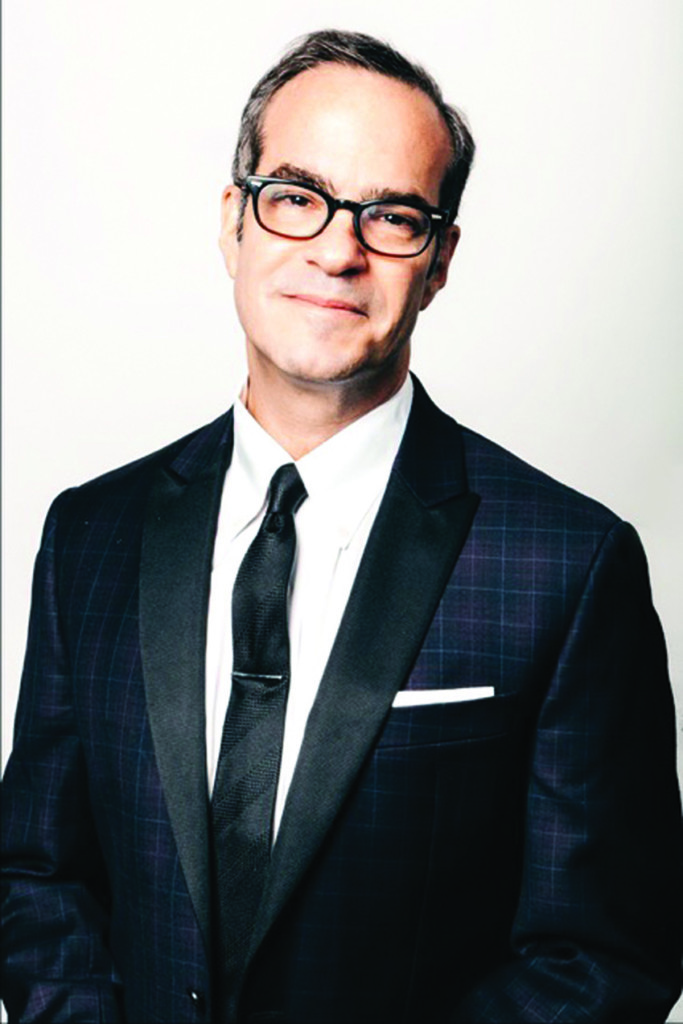
Although 2015 was a strong year for Randa, Katz confides that they didn’t get everything right: “We launched cold weather accessories for Levi’s, Dockers and Seacrest during the warmest winter on record.”
For 2016, Randa is building all-new platforms to accelerate the process of testing and implementing new ideas. “We need to speed it up: to test, analyze and roll-out more quickly. As a company, we can do this via our powerful service organization (4,000 merchandisers that service 10,000 stores). They’re doing consumer insight studies, making us three to six months faster than we were two years ago. As a company, we are hyper-analytical; there’s nothing we do that doesn’t get measured.”
Case in point: Katz (a self-proclaimed “geek”) demonstrates his computer- operated model “hand” (that he concocted in five minutes) that indicates via vibration in the fingertips when a glove wearer receives a text or call from a cell phone in a coat pocket. “We can do the technology with no problem; the trick will be to test whether consumers find it valuable and how much more they’re willing to pay for it.” —KAG
Where in the world is Tom Ford? The jet-setting fashion designer knows how to keep us guessing; not many of us realized that not only would he be in Los Angeles on January 10, but that he’d be on the red carpet of The Golden Globes with date Julianne Moore, and then again on the Globes stage co-presenting with Lady Gaga (who starred in his recent fashion video). And as good as those ladies looked (especially Moore, who was wearing one of his most glorious creations), Ford looked even better in a tuxedo that fit him like a glove.
Equally important to the fashionable set is that one can never be sure where Ford will be when it’s time to present a new menswear collection. This season, he rather suddenly switched from London to New York, where he’s was to hold select presentations instead of a major runway show on February 18. However, now he will be holding his fall/winter 2016 runway show in September where he will make his clothes immediately available for purchase after the show.
While Ford certainly understands the importance of the press, he wants to make sure they really see and feel every detail of his clothes. Most of all, he’s spoken of how important it is that the consumer get the message behind his clothes, and not worry so much about the medium in which they receive it. —BSL

Although some were shocked when Mitchells bought Mario’s in 2015, merging two of the most well respected specialty stores in the country and creating a $150 million specialty apparel powerhouse, others were hardly surprised.
“In a slow growth environment, the only way to expand is through acquisitions,” Mitchell asserts. “We’re not done yet, but at the moment, we’re focused on our existing businesses, on our 400-plus associates, and on gradually integrating Mario’s.”
The challenge of blending two disparate cultures is a bit daunting, even for experts. “The success of Mario’s is its local orientation. The Pacific Northwest has its own nuance—in assortments and in attitudes. We don’t want to lose this, even while incorporating certain components into our model. Our ultimate Mitchells goal: to create the finest collection of independent local specialty stores in the world.”
His secrets to family harmony: “A high level of communication, clearly defined job descriptions and definite accountability. Consultants call it ‘governance’—clear career paths and reporting lines for both family and non-family executives.”
Moreover, Mitchell acknowledges that their “cash is king” strategy allows the family to make some bold moves when it needs to. That said, he maintains “today’s game is much more complex and challenging than it used to be: we have a millennial generation that shops very differently plus we’re competing with our own luxury brands. For those who don’t truly love it, this could be a good time to get out.”—KAG
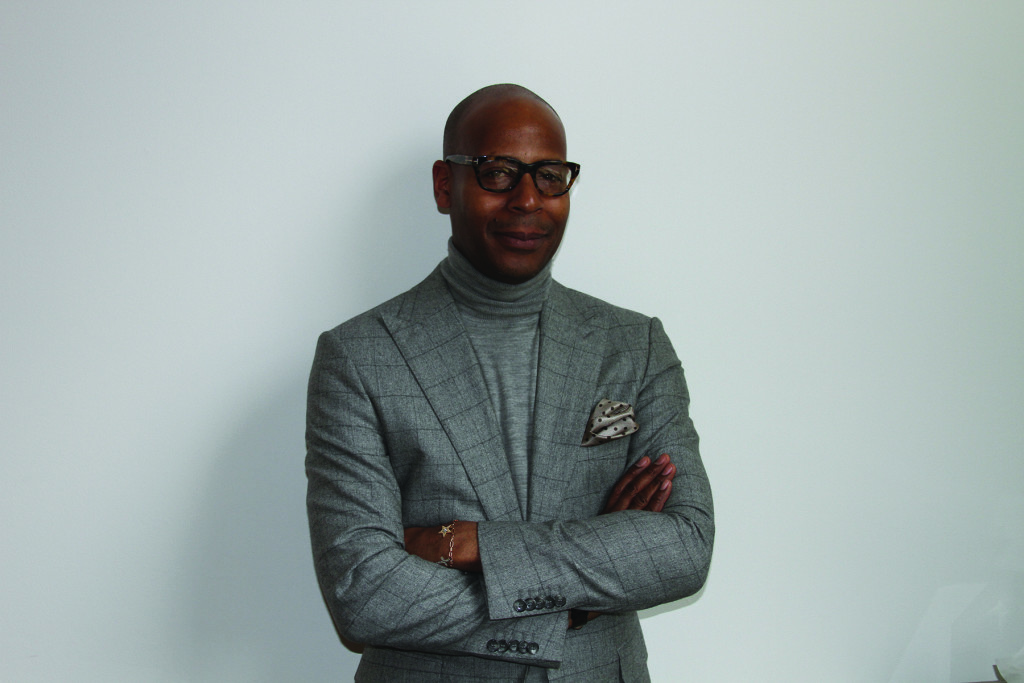
One way Guion did that in 2015 was by collaborating with one of the entertainment world’s most recognizable names. “ I think my finest achievement last year was working with the entire team on the launch of Ryan Seacrest Distinction,” says Guion. “Ryan is such a dynamic and inspiring force and it has been exciting to be a part of his brand personality extension.”
While Macy’s has certainly struggled financially in the past few months, the fact that men know the department store is one place they can find so many of their favorite lines under one roof is one reason most experts believe the store will end up just fine. “The continued partnership with our men’s merchants to identify the key must-haves and trends of the season and bringing those to life for our menswear consumers is one of the things I’m proudest of professionally,” he says. “I never stop being a student of this business. I never stop learning. Staying engaged 24/7 has been my guiding lens.”
Doing that means Guion will be working harder than ever in 2016. “My biggest goals this year are to keep our men’s/millennial consumer interested in an elevated level of trend and fashion, to keep making sure we continue to demystify the concept of looking your best, and making sure our guidance is accessible and digestible.” —BSL
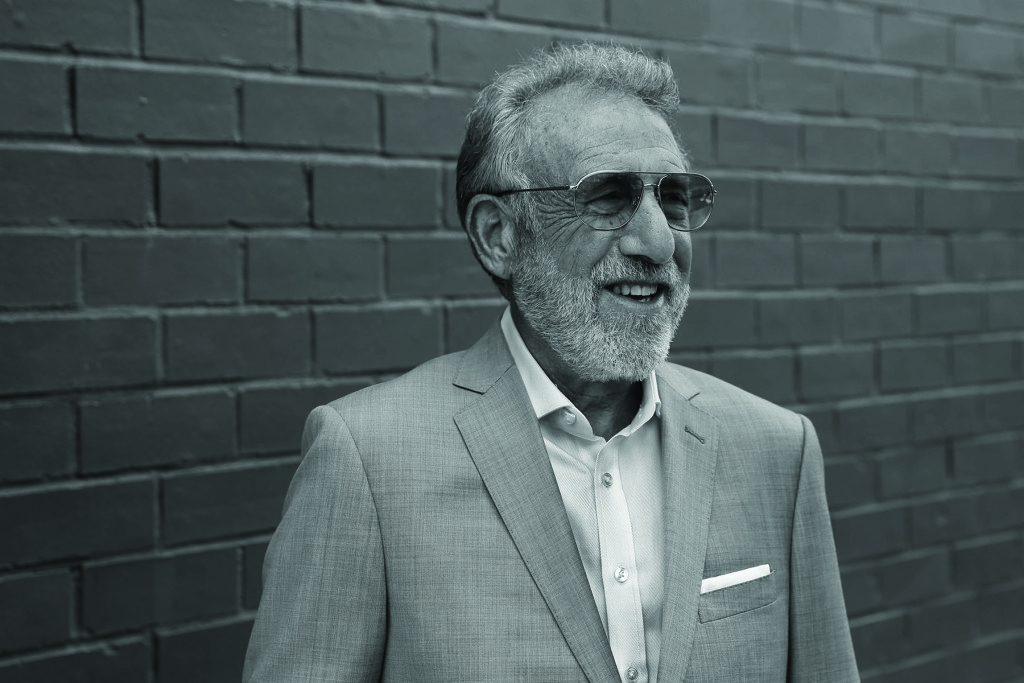
But the ever-surprising Zimmer chose instead to launch not one, but two, online businesses in 2015: Generation Tux, which provides suits and formalwear to men with a click or two of the mouse, and zTailors.com, which allows men to find one of 600 accomplished tailors around the country with just a tap on their smartphone.
“Moving into digital was a whole new ballgame for me,” admits Zimmer. “The way it used to go when someone wanted to start a business is a little seed money to start, followed by expansion that reflected profits. That’s what I did with Men’s Wearhouse. When I launched Generation Tux and zTailors, I had to do things differently, and when I decided to launch zTailors, I needed to learn how to run a business based entirely on technology, which I didn’t know anything about.”
While cynics might think Zimmer was looking just for a way to increase his bank account, he says the almighty dollar is never his prime motivation. “Desire is the engine of life; you have to be passionate about what you do,” says Zimmer.
“I am also committed to building businesses based on the stakeholder, not the shareholder. Since the day I started Men’s Wearhouse to the moment when I launched zTailors and Generation Tux, I have always made my workforce and my customers an absolute priority.”
Of course, as anyone who’s met Zimmer knows, his next step could be forward or backward. (He’s offered to run the failing Men’s Wearhouse once again.) But he’s not planning to let his new babies walk without him watching. In fact, he expects them to be running quickly. “In 2016, we’re going to take Generation Tux to the next level: my goal is to exceed all expectations for the brand, making it the premiere online suit and tuxedo rental service out there.” —BSL
One doesn’t become the world’s largest maker of tailored clothing by accident, nor does it happen by luck. Ronny Wurtzburger, surely our industry’s quintessential salesman, exudes a rare combination of integrity, street smarts, and charm. “It’s about putting our customers first, helping them out in good times and bad, even sending them to competitors if we don’t make what they need. Once you build trust, it’s not about selling.”
With a vast stable of designer and celebrity brands (Ralph, Calvin, Donna, Varvatos, Kors, Sean John, Izod, Van Heusen, Todd Snyder, HSM, Shaq, Ryan Seacrest, Chaps, Andrew Fezza, Andrew Marc, Tallia Orange, and most recently Michael Strahan), Peerless owns such a dominant share of the suit market that one would think Wurtzburger could finally relax a bit. “We’re working on securing more names,” he assures us. “If we stand still, they’ll catch us.” (Although this ominous “they” remains a mystery: most clothing competitors are long gone.)
Other Wurtzburger success secrets: “We pay careful attention to every aspect of the business, we’re bringing in young people with a talent for technology, and we’re constantly seeking advice.” He especially credits his team of loyal employees. “Many (still in their 40s) have been here for 15 to 20 years. They’re here at 7:30 a.m. and they’re here at 8:00 p.m. I don’t have to tell them: they do what’s needed.”
New Peerless initiatives for 2016 include the launch of a luxury clothing collection geared to better specialty stores, “offering them extra margin on the finest fabrics in the world” and new offerings in formalwear separates.
But Wurtzburger’s legacy, he hopes, will be not the number of suits sold (“anyone can sell a suit”) but rather the number of people in need who have benefited from his philanthropy. (With Macy’s Tim Baxter, he recently shattered the fundraising record at YMA’s January dinner with over $4 million in donations.) “I’m lucky that Al Segal allows me to participate in every industry event. For me personally, I’m channeling my grandfather, who was highly recognized for his philanthropy. If I can encourage industry colleagues to dig a little deeper, I’ve done what matters.” —KAG
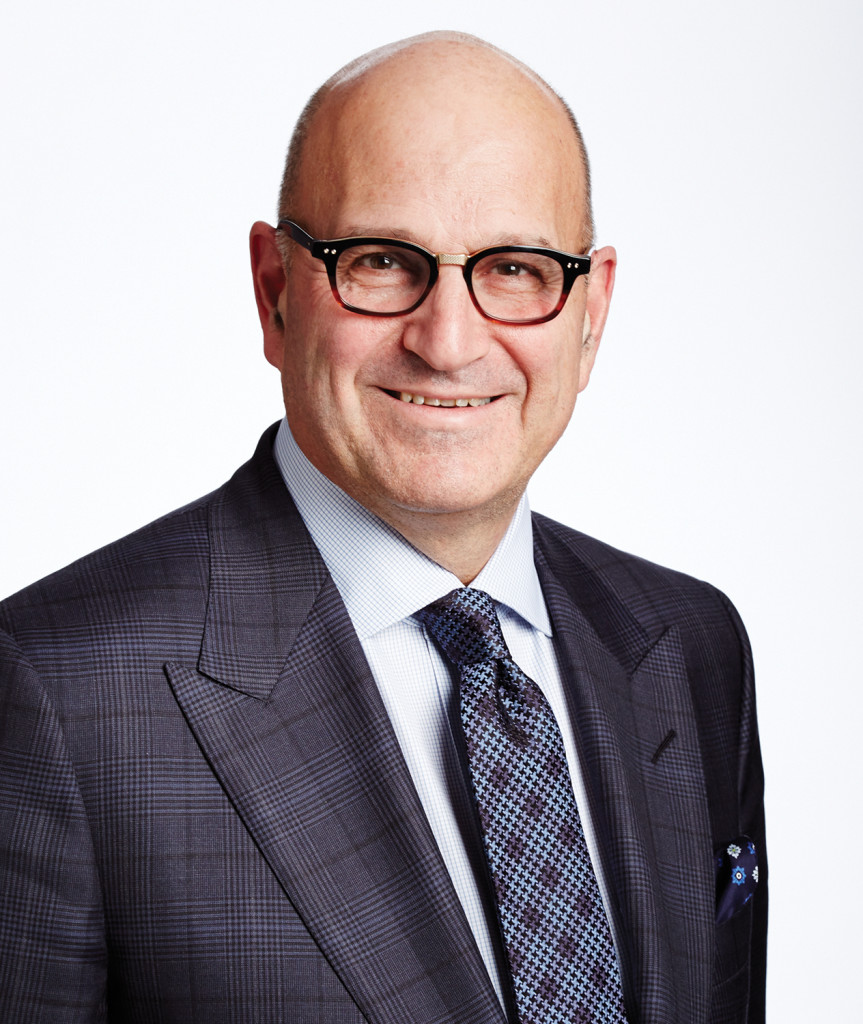
The result: a powerhouse group of 17 luxury menswear stores across Canada , a strong web business and 700-plus employees.
“We did a record number of projects in 2015, including renovating 100,000 square feet of space in four stores,” he says. “Our goal was to target a younger fashion customer as well as a classically elegant shopper. Our foundation is luxury brands like Tom Ford, Zegna, Cucinelli, Varvatos, Etro, Dolce & Gabbana, Armani Black Label: brands that require particular environments to reflect their unique sensibilities.”
Looking ahead, Rosen will continue to renovate (“although we’re running out of stores to re-do”) and is looking at adding locations. Most importantly, he’s pioneering a new online concept that integrates highly trained sales associates into an omni-channel role.
“We’re launching this in all stores: every regular customer will have access to a fully trained sales associate online in real time. This will revolutionize the business.” —KAG

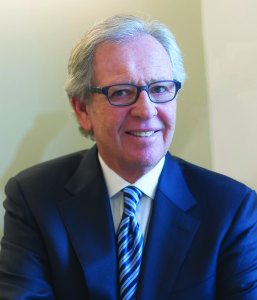
With a business model that incorporates multiple categories, multiple designers, wholesale and retail, men’s and women’s, Goldfarb observes that “our model is so complicated that few can duplicate it.”
Asked how he decides what to acquire, he explains that it’s based on intuition, experience and sound business sense. “When we bought Vilebrequin, we knew Wall Street would hate it. What do we know about luxury swimwear, they asked (which they also asked about dresses, shoes and everything else we’ve acquired). But we knew it was the right move for us: we paid a premium and the stock went up 20 percent that day.”
And, says Goldfarb, even with no acquisitions in 2015, G-III’s organic growth this past year “was greater than our total volume seven or eight years ago.”
A strong believer in cultivating talent, Goldfarb maintains that this asset is highly undervalued in today’s marketplace. “We have access to the world’s best talent, right at our doorstep, every minute of every day. Unfortunately, our industry is over-populated with private equity firms: rather than nurture talent for the future, they prefer to leverage and get out fast. Our goal is to buy lifestyle brands, find the right leadership for each, and help them grow.” —KAG

Mallis has also started her own international fashion and design consultancy, and hosts a popular conversation series at the 92nd Street Y entitled “Fashion Icons with Fern Mallis”, where she has interviewed fashion heavyweights such as Bill Cunningham, Calvin Klein, Donna Karan, Tommy Hilfiger, Tom Ford, Michael Kors, and Marc Jacobs. This past April, she put those interviews together in a book entitled Fashion Lives: Fashion Icons with Fern Mallis.
When asked about her second act and how she enjoys it, Mallis responds: “I couldn’t be happier with this phase of my life and career. My ‘Fashion Icons with Fern Mallis’ series continues in its fifth year and the book got extraordinary reviews and is now in its second printing. The Wall Street Journal selected it as one of the four best fashion books of 2015.”
When asked if she ever misses running Fashion Week, she replies: “I had a blast this past year traveling all over the country doing book signings and talks and this continues through 2016. I do not miss running Fashion Week, although I still enjoy going to the shows and support all my pals every season.” —MM
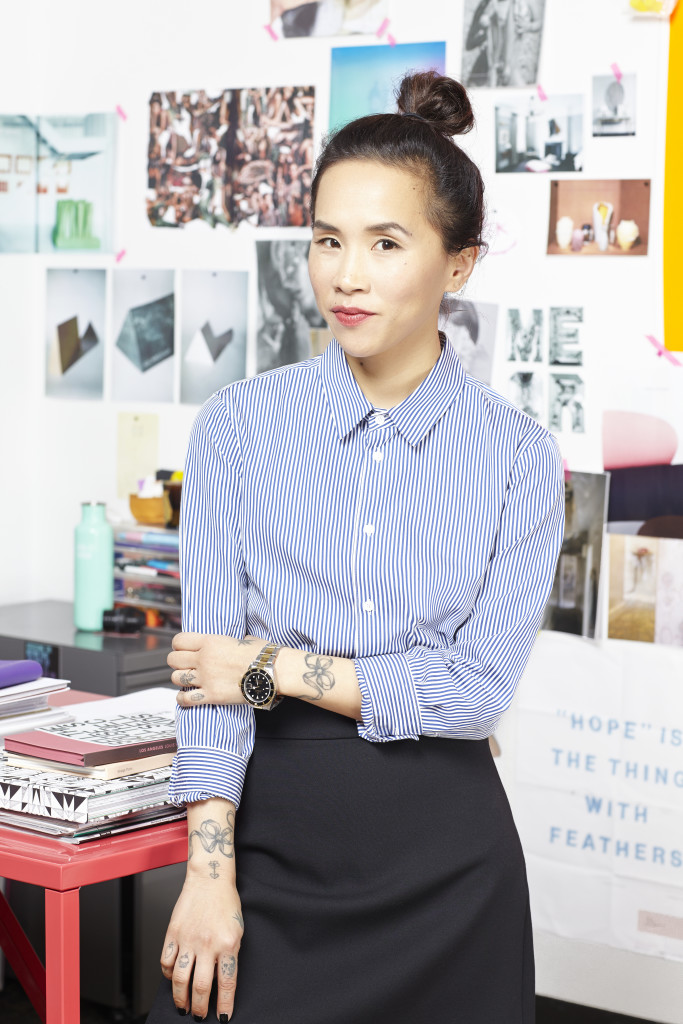
“I love these branded Pop-In shops because we can present the world of that brand in a way that our customer may not have seen before,” says Kim. “With our multi-branded themed shops we curate the best brands and share that through our own lens.”
Kim has worked with many notable brands for her Pop-Ins, including Nike, Warby Parker, Opening Ceremony and even the Italian Trade Commission. Now, with 2016 in full swing, she is taking a dive into exploring menswear with the launch of a dedicated Pop-In for menswear brands. “Heartbreakers II launches on February 12th and I’m super excited about this one,” says Kim. “Its part two of a shop we launched two years ago, which was timed along with Valentine’s Day. We’re excited to bring it back and introduce new brands for men, including Outerknown, Long Journey, Patrik Ervell, Tim Coppens, Cottweiler, Stutterheim and so many others.”
Kim doesn’t take all of the credit. “It’s no secret, but I have a really amazing team,” she adds. “When you’re a small team it’s easier to be nimble and change directions quickly, and to get everyone on board on the same page. Their dedication is unmatchable. I’m super-grateful for all of them daily.”
And Nordstrom is equally grateful to have someone like Kim on its side, since she is bringing in a new customer base. “She brings a skill set, a level of experiences and taste level that was not necessarily what we had here,” Pete Nordstrom, the store’s co-president, told The New York Times. —SG
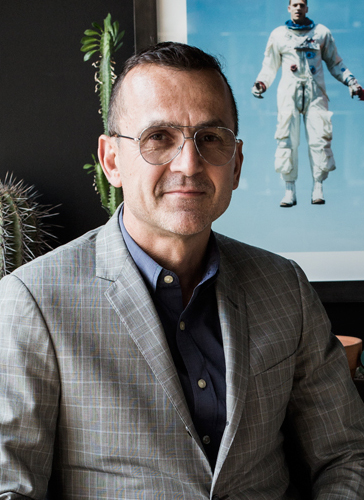
Two years ago, the topic came up again and Kolb pulled together some industry heavyweights and brainstormed the advantages of creating a fashion week for men. “It really was the industry—the designers, the editors, the buyers—who asked for it,” he says. —MM
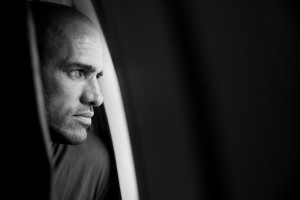
This West Coast-based menswear brand has an understated approach to design with a huge emphasis on sustainability. The concept aims to blend style, function and sustainability with the intent to protect the Earth’s natural resources and inspire change within the men’s fashion and apparel industry. This business philosophy proved so appealing, it led to an investment in Outerknown by Kering, a Paris-based company that also invested in Gucci, Brioni and Bottega Veneta.
“I created Outerknown to smash the formula, to lift the lid on the traditional supply chain, and prove that you can actually produce great looking menswear in a sustainable way,” said Slater, when the brand launched. “The last two years have been a huge eye-opener for me. It’s clear now just how challenging it is for any brand to put sustainability at the forefront of their business and I’m proud that we’re one of the few taking the lead.” —SG
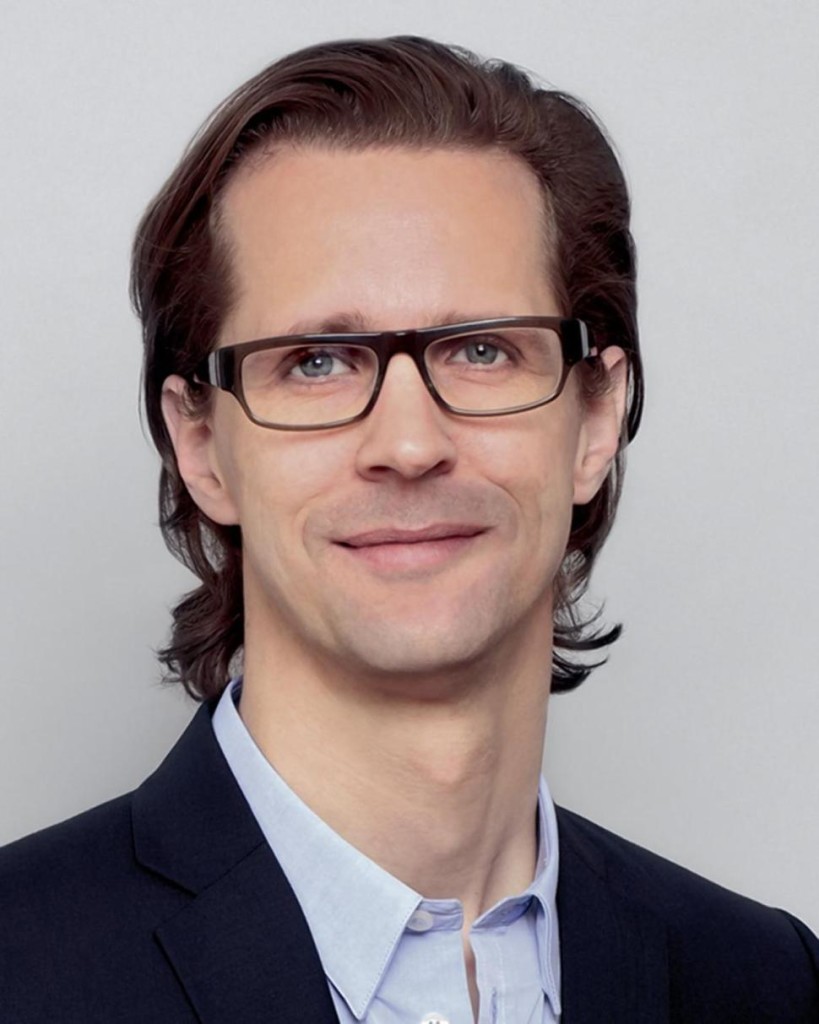
In a September New York Times feature, Larsson was mentioned as having made his name in budget-conscious mass-retailing, adding that “though even at those mass brands, Larsson’s success has been built on fostering a level of attention to design that sellers of low-end, family-oriented apparel had previously not put into their wares.”
Under his leadership, Old Navy enjoyed three consecutive years of profitable growth, adding $1 billion in sales. Previously, in 15 years at H&M, Larsson was part of the team that grew sales from $3 billion to $17 billion and expanded the company’s operations to 44 countries.
According to a recent feature in Forbes, Larsson’s track record at H&M and success in powering growth at Old Navy were the result of supply chain skills and expertise in how the fast-fashion process works. He was able to apply a hybrid version at Old Navy, increasing speed to market, thus turning out new lines with great efficiency.
“He’s unique as a man, a man who’s capable of building businesses and growing companies,” Ralph Lauren told the Times referring to Larsson. “But at the same time he’s sensitive to people’s feelings.” —SG

While his eclectic Robert Graham collection is still going strong, this Coty award-winning designer, encouraged by vice president of sales Sean Hieter, even recently added a luxury collection called R for upscale stores. “I’ve always used Italian fabrics but never manufactured in Italy,” says Stock. “This is sophisticated luxury product, handcrafted with just a bit of whimsy. Whereas Robert Graham is a shout, R is a whisper.”
Asked what sustains his successful track record, Stock is thoughtful. “My work is like a hobby to me. I wake up every morning challenging myself. I’m lucky I have history and experience behind me: I’ve seen the good, the bad and the ugly, which really helps.” —KAG
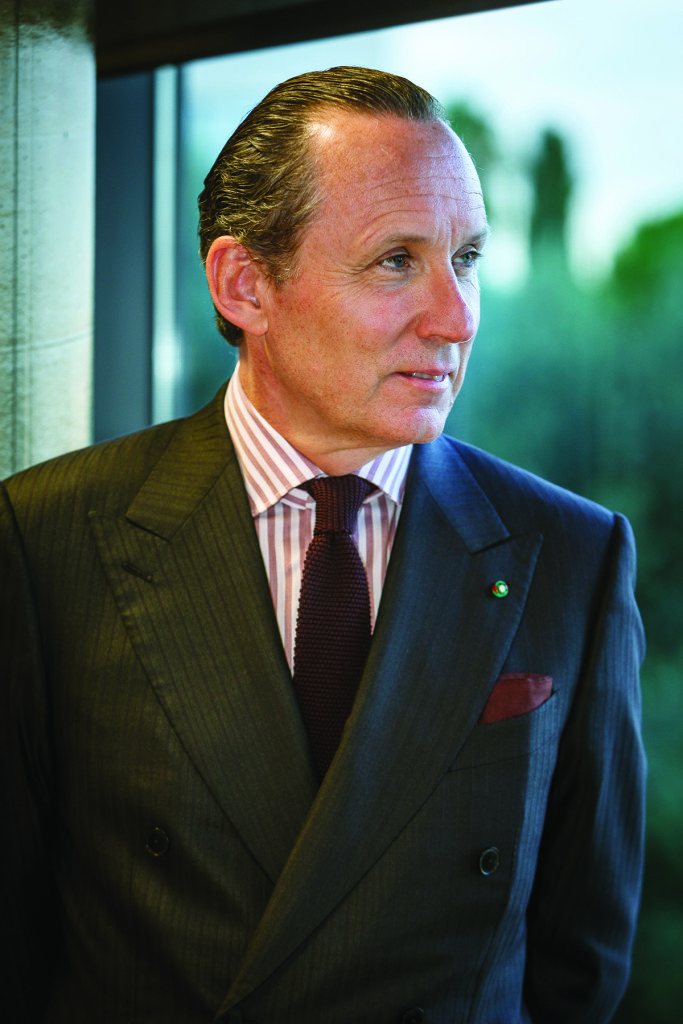
And it’s not just in the world of fashion where Gildo practices thinking outside the box: Zegna is known for its artistic endeavors under their ZegnArt entity, environmental activities under Oasi Zegna, and other philanthropic projects under Fondazione Zegna. Most of all, there’s Gildo’s devotion to his family, past, present and future. “I am constantly driven by the legacy I received from my father and the vision I would like to transmit to the next generation of the Zegna family.” —WB
How do you follow up winning the design trifecta of the CFDA Menswear Designer of the Year Award, the International Woolmark Prize and the CFDA/Vogue Fashion Fund? You create the biggest trend happening in menswear right now. Whether you call it “Streetwear” or “Tailored Casual” it’s the influx of sport and technical fabrics and details into modern sportswear that has become their signature. The designers are quite on a roll, not only with their upscale Public School line, but as creative directors of DKNY (although their first collection was strictly women’s). Who knows who esle might snatch them up? As Cathy Horyn of New York Magazine’s “The Cut” famously said: “Erstwhile rapper- designers could learn a lot from Chow and Osbourne.” Truer words were never written. —MM

But when Bailey joined forces with CEO Angela Ahrendts, the journey back and beyond began. While innovative marketing and brand management have played a big part in the brand’s exit from the ashes, Bailey’s consistently exciting collections that manage to perpetually push the envelope while keeping a solid foot in the brand’s heritage are the proof in the pudding. Burberry is now one of the most aspirational brands in the world, and Bailey is one of the biggest influences on modern menswear. —WB

Bartlett was once famously quoted in The Washington Post saying “People will say, ‘Oh, your clothes are too gay.’ but I’ve never seen two shirts cruising each other.” Prior to John Bartlett we had not seen the objectification of the male form on the runway, done in elaborately staged theatrical productions. Bartlett drew upon Jean Genet, Tom of Finland and The Deer Hunter as just some of his inspiration. Who can forget his “Voo-Doo” collection in which he used all black models and had a live chicken strutting down the runway? Without John Bartlett there would be no Tom Ford or Thom Browne.
But after more than a decade of mega-success, Bartlett, whose signature style of rugged American authenticity earned him two Council of Fashion Designers of America (CFDA) awards, went on a sabbatical in 2003 to Southeast Asia and returned as a practicing Buddhist. It was the first step in a new chapter for the designer, who soon became a vegan, stopped wearing leather, and began to practice what he preached in his own collections.
In 2011, Bartlett was chosen as a winner of the CFDA/Lexus Eco Fashion Award. Soon after, the designer debuted the first eco-luxe, 100 percent cruelty-free menswear collection at New York Fashion Week in February of 2012. “The fashion industry has a blind spot when it comes to animals used for clothing and I hope that I can help to raise awareness and help promote compassion and alternatives to traditional animal-based fabrications,” says Bartlett.
Currently, Bartlett is in partnership with The Bon-Ton Stores, where he designs John Bartlett Consensus and John Bartlett Statements, two collections which offer all components of a man’s wardrobe, including sportswear, tailored clothing, underwear, loungewear and accessories. The collaboration with Bon-Ton also includes John Bartlett Pet; a percentage of its sales goes towards helping homeless shelter dogs through The Tiny Tim Rescue Fund”, named after his beloved dog. —MM
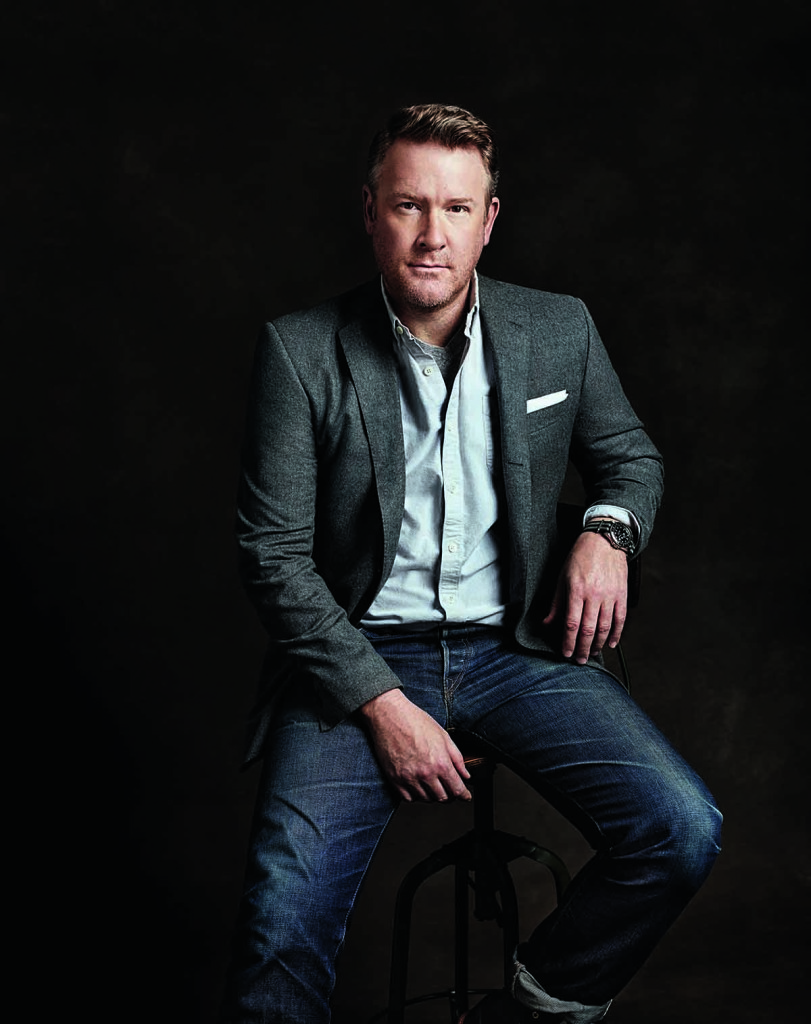
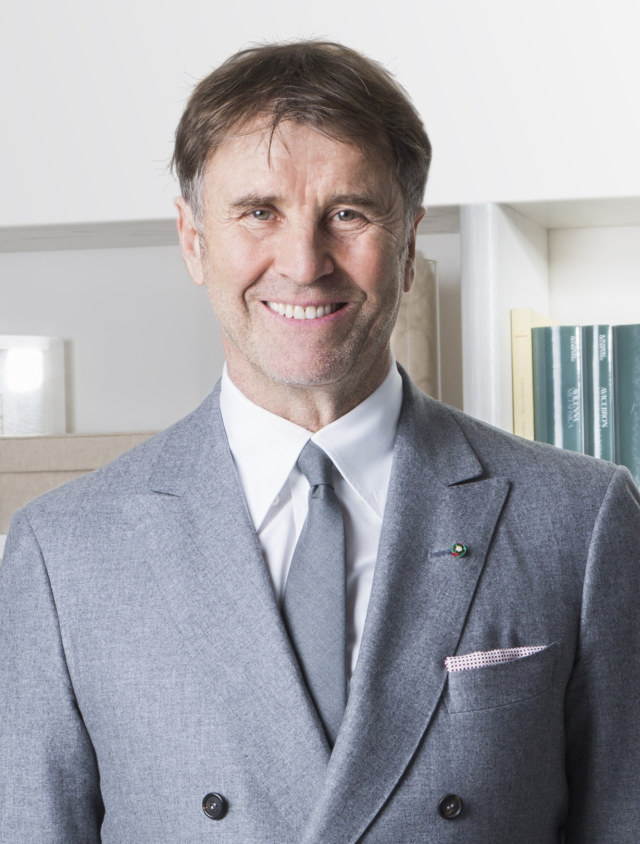
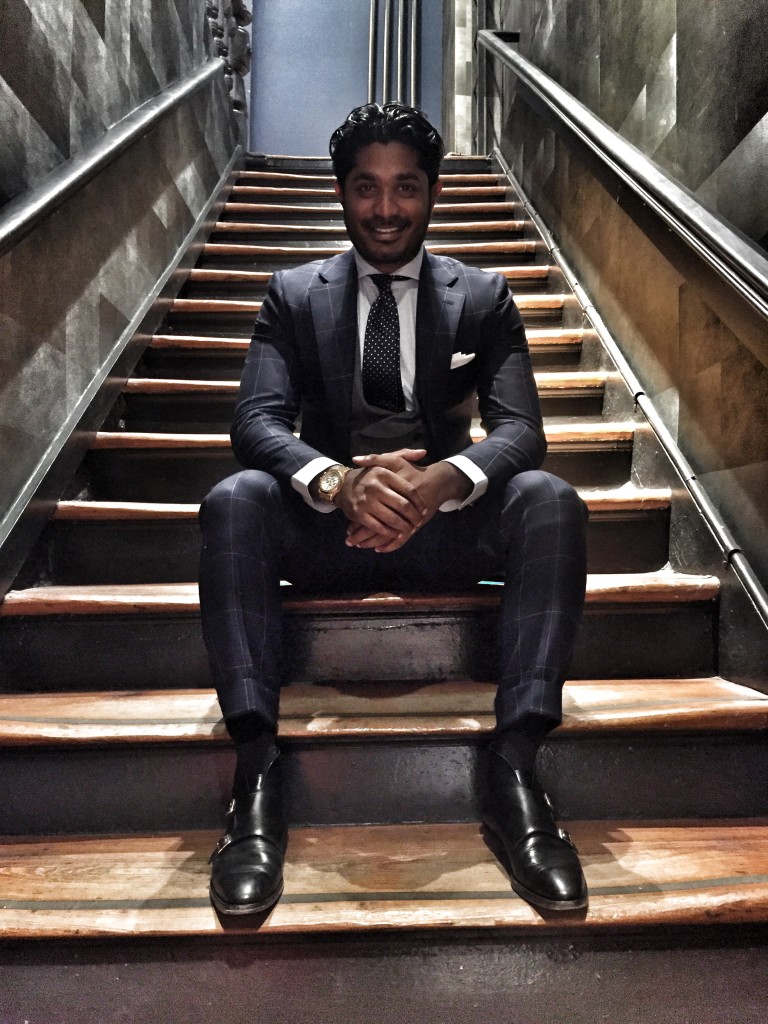
Five years after the company’s U.S. debut, Suitsupply has 17 stores across the country, as well as shops at Stanley Korshak and Bloomingdale’s. In 2016, the company plans to open up to 10 more new locations, including Greenwich, Connecticut, San Francisco, Los Angeles and Tampa, Florida. Meanwhile, the company’s online business is still a major component to its success, making up about 25 percent of the company’s revenue.
“The secret to our business growth is that we focus and try to excel at one thing,” says de Gruiter. “We spend time and energy making a very nice product so people will come to us, instead of us having to be in the high street. The concept works.” —SG

With Lim and Leon’s keen eye for detail and their dedication to creativity, it’s no wonder that Opening Ceremony is always a hot ticket when presented at fashion weeks, has become a go-to brand for the cool kids, and continually partners with an ever-expanding list of innovative collaborators such as Topshop, Maison Martin Margiela and Fossil. Not every brand can remain as fresh and as exciting as it’s ever been, but Opening Ceremony is the exception to the rule. —WB

Most would say implementing change at a huge multi-national corporation is like turning a big ship: a painfully slow process. But PVH’s Ken Duane is a master. “Our most recent accomplishment is the turnaround of the underwear group (internally known as TUG, which includes Calvin, Tommy, Kors, Olga) for which I totally credit Cheryl Abel-Hodges, division president. We had to virtually close distribution in Europe, start over, and totally clean it up here. We invested in the brands and business for this group is healthier now than ever.”
Also doing well: the dress shirt division under David Sirkin, thanks in part to the successful launch of flex collar technology and other initiatives in stretch, fit, color and pattern. “The trick here was controlling inventories: by decreasing supply, we’ve seen a major turnaround, bringing us back to historical rates of profit.”
After starting his career at Burberry, Hugo Boss and Nautica, Duane was personally recruited to PVH by then-chairman Bruce Klatsky. “The company had just bought Izod, its first sportswear business. PVH has always been open to opportunities and we’ve got our eye on a few things. Whether they’ll be transformational acquisitions like Calvin and Tommy or bolt-ons like Superba, we’ll let the economic turmoil settle a bit and then go for it.” —KAG

Bradley Cooper, Ryan Reynolds, Chris Evans, James Marsden, Armie Hammer — the list goes on. What sounds like the starring cast for one of the most amazing movies of 2016 is actually just a partial client list of stylist Ilaria Urbanati. Who started the trend of men wearing jewel-colored suits? She did, by putting Cooper, Hammer and Marsden in a whole crayola box of sartorial splendor on the red carpets. So the next time a customer (or his wife) comes in to your store with a celebrity swipe and says “I want this,” you know who you have to credit. —MM
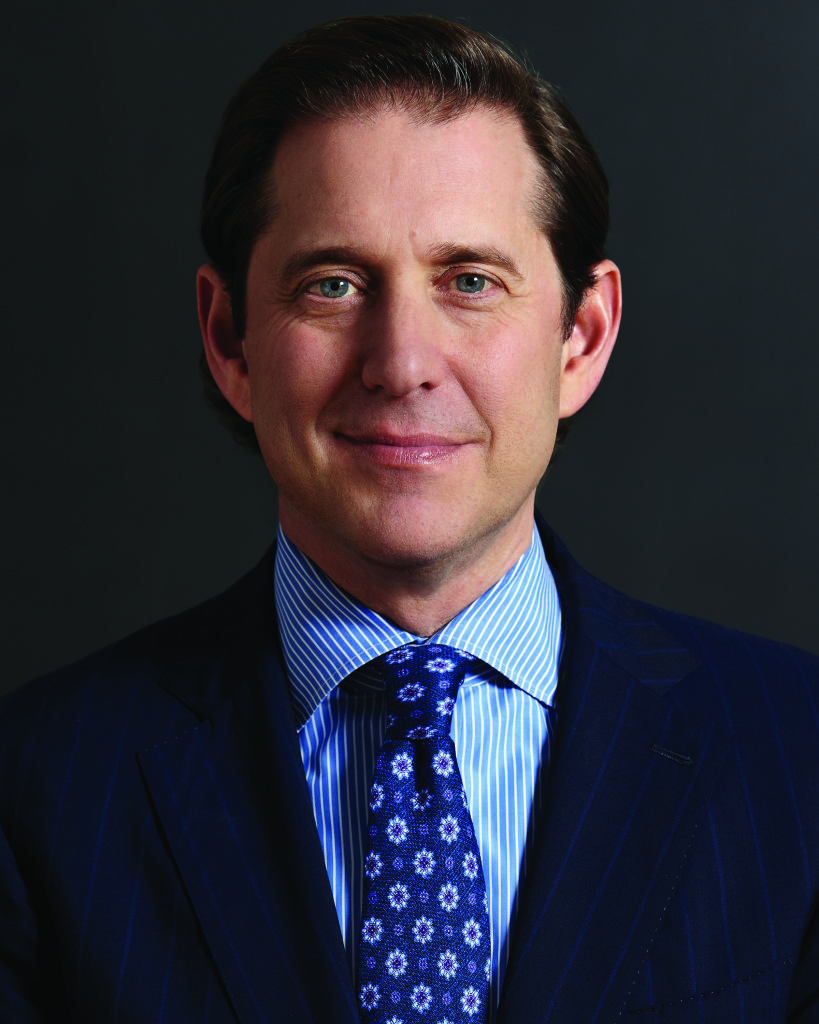
Indeed, one only needs to look at HBC’s holding to see the absolute truth of that statement. Under Baker’s guidance, HBC now owns 480 stores throughout the world (a total that will grow by over 100 in 2016) including Canada’s Hudson’s Bay, Saks Fifth Avenue and its off-price counterpart OFF 5th, Lord & Taylor and its recently-launched off-price Find@Lord & Taylor, GALERIA Kaufhof and SportArena in Germany and Galeria INNO in Belgium.
And that doesn’t count its most recent purchase, e-tailer Gilt Groupe (for which it paid $250 million), a favorite of the fashionista set.
“2015 was a transformational year for HBC,” says Baker. “Our acquisition of Kaufhouf moved us into the European marketplace and established HBC as an international retailer. We now have a significant European platform from which we can explore additional growth opportunities.”
Baker learned about the art of buying early in his life from his grandfather, Loomis Grossman, and father Robert, who were in the business of purchasing real estate, particularly shopping centers. He was also a young entrepreneur himself; as a teen, he ran his own business, called Party Perfect, which focused on catering dinner parties and other special events. And he later studied cooking in Paris.
But he eventually joined the family business, National Realty and Development Corp, and later formed a private equity firm targeting retailers, before moving over to HBC, which NRDC bought in 2007. And his interest in real estate hasn’t subsided in the slightest as HBC is part of two successful real estate joint ventures.
Still, HBC has become best known for the attention it gives its stores, and its customers. Asked for his longtime success secret, Baker responds: “Staying relevant, enabling teams, adapting to our customer, and driving an exceptional all-channel experience.”
While there will be a great deal of emphasis on Saks in the coming years—including dividing its huge Hudson’s Bay flagship in Toronto in a very unusual way, placing Saks virtually inside it, and a three-year renovation of the New York flagship that will completely freshen up the men’s department as well as add new restaurants along with other men’s amenities —Baker doesn’t play favorites among his retail “children.”
“We remain focused on driving growth and performance across all banners at HBC. The acquisition of Gilt Groupe is consistent with our strategy to rapidly advance our all-channel model, as well as continue to grow our off-price business.” —BSL
Contributions by:
Karen Alberg Grossman,
Brian Scott Lipton,
William Buckley,
Stephen Garner
and Michael Macko




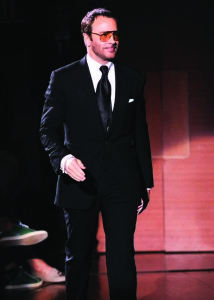

























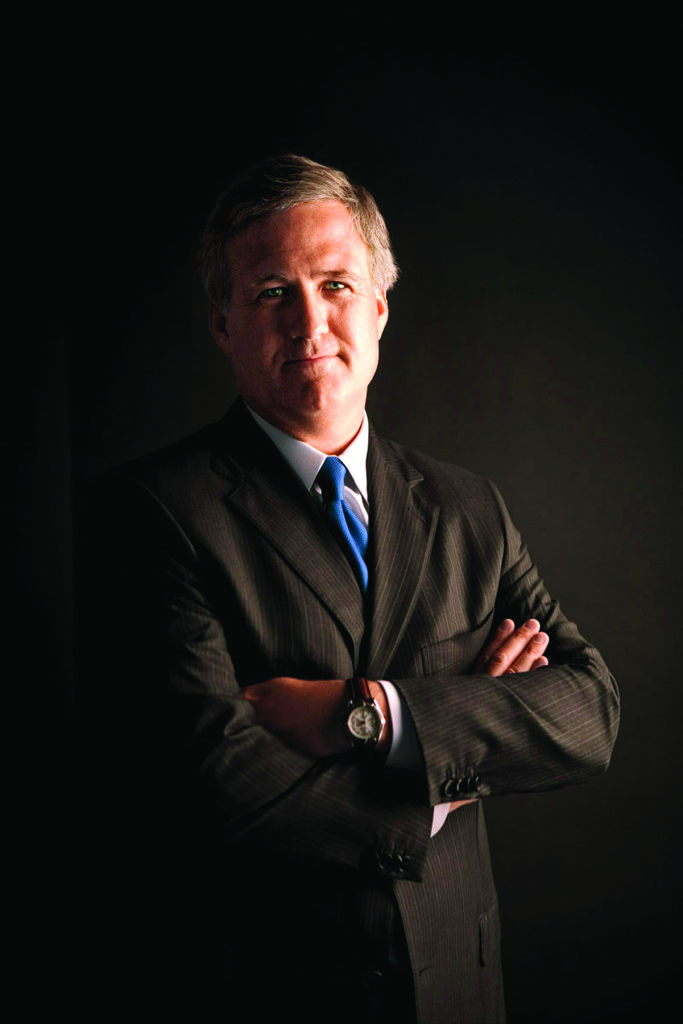

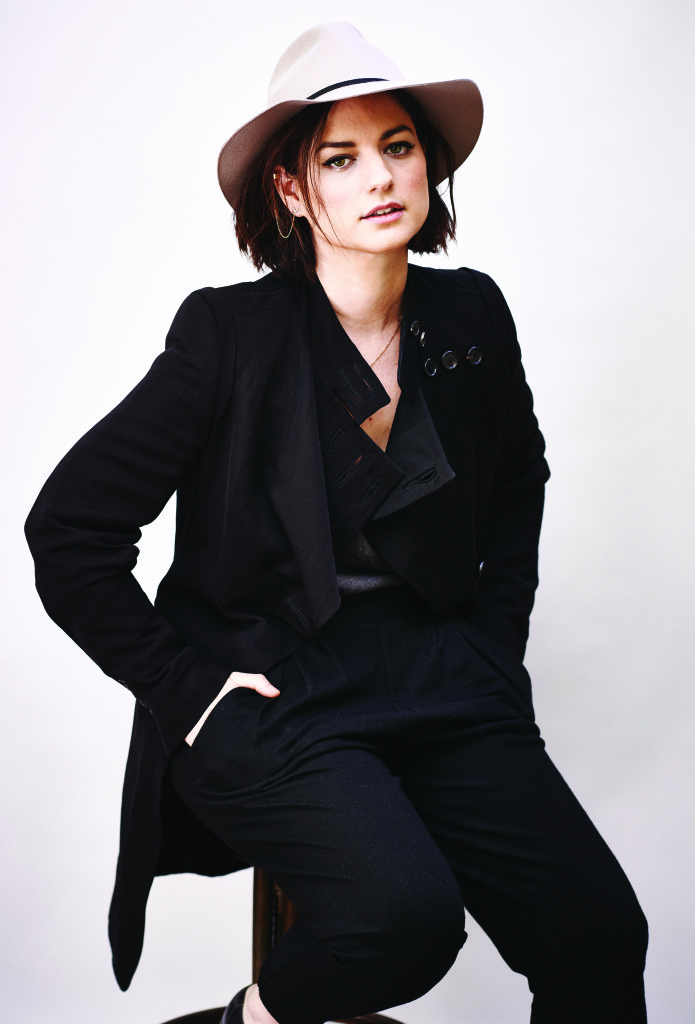

It’s nice to be in great company. It’s even better to be with a great company and to work everyday with great managers. I share this acknowledgement with our incredible Executive Committee, Steering Committee and all the amazing leaders and associates at Randa, worldwide. The best is yet to come. DJK